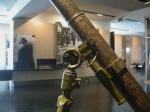Mortier de 82mm PM 37
English Translation
Historique Voir ICI
History Click HERE
The 82 mm mortar model 1937 was the first Soviet serial battalion mortar He was abled to suppress the firing points , engage manpower , destruction of barbed wire and the material destruction of the enemy located in shelters and inaccessible for grazing infantry and artillery fire , and arranged open.
Predecessor mortar PM. 1937 was a mortar arr. 1936
It was created in 1934 by designers so-called Group D is a structural unit of the Artillery Research Institute of Gas Dynamics Laboratory upon design of the french Brandt Mortar. Led a group of engineer NA Dorovlev . In 1935, the mortar has passed field tests and in 1936 was adopted by the Red Army. The design of the 82- mm mortar arr. 1936 became the base for the creation of all subsequent Soviet battalion mortars.
In 1937, the construction of mortar made ??changes to improve manufacturability and combat effectiveness . In particular was reshaped baseplate - it became round .
This sample received index GAU - 52 M- 832SH and in the same year was accepted for service. 82 - mm mortar battalion arr. 1941 (index 52 GAU -M - 832M ) - different from mod. 1937 separated the presence of the wheel speed, the base plate arch structure (similar to 120-mm mortar ) , as well as a two-legged structure.
The modernization was redesigned bipod , wheels and mount the sight.
Description
Mortar consists of a barrel , bipod , the mast , the baseplate and sighting devices . Mortar tube serves to communicate the desired direction of flight of mine . For a shot mine falls stabilizer ( tail ) in the muzzle . Under the influence of its own weight , it slides along the bore down and impale primer tail chuck ( main charge ), located in the tube stabilizer mines on the striker screwed into the bottom of the breech . Fire primer ignites the powder charge tail holder. Powder gases break through cardboard shell and liner through ogneperedatochnye holes are located on the stabilizer tube bore, where they create pressure under the influence of which the mine is ejected from the mortar barrel . The tail chuck is the smallest charge when firing so only one tail chuck smallest effective range (100 to 475 m) . To increase the firing range are subject to additional charges which are strengthened between the feathers worn stabilizer or stabilizer on the tube mines . When fired from intruding tube stabilizer tail cartridge powder gases ignite additional charges of which the combustion pressure in the bore is increased , and ejected from the mine barrel with greater speed and , therefore, on a large range . For best flexibility fire spent a few extra charges. Bipod - carriage serves to maintain the trunk , giving it the desired elevation and traverse run . Therefore, bipedal - carriage placed all mechanisms immunity: lifting , turning and leveling mechanism . Bipod - carriage connected to the barrel by means of clips .
At the moment of the shot recoil force perceives rectangular base plate membrane , which when fired pressed into the ground. Due to soil settlement barrel during firing has the opportunity to move back a little , pulling a bipod . To reduce the impact force ( push ) , which then undergoes bipod - carriage and that damaging to sights and aiming mechanisms , coupled with barrel bipod spring buffer , softening the impact on bipod - carriage.
As the mortar sights on a mechanical mortar sight BCH -82 .
 |
Technical Data
Weight in mortar firing position , kg: 56
Weight of the pack with three trays ( 9 min ), kg: 47
Weight of the pack with the barrel , kg: 19
Weight of the pack with a two-legged , kg: 20
Weight of the pack with the base plate, kg: 22
Weight sight with case, kg: 1.5
Range 3000m
Muzzle velocity 211m/s
Rate firing 30c/mn
Angle vertical guidance deg. : 45 to 85
Angle horizontal guidance when working rotating mechanism , hail .: ± 3
Angle horizontal guidance when carrying bipod , hail .: ± 30






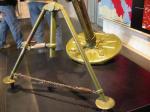
.JPG)
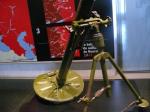
.JPG)
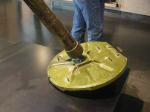
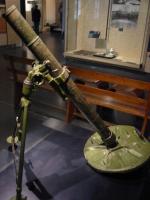
.JPG)
.JPG)
